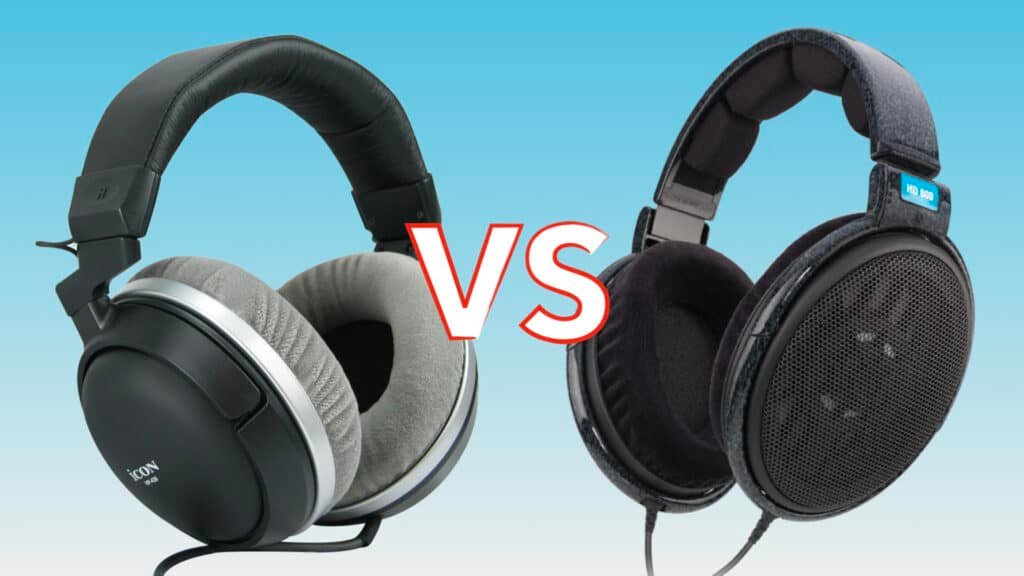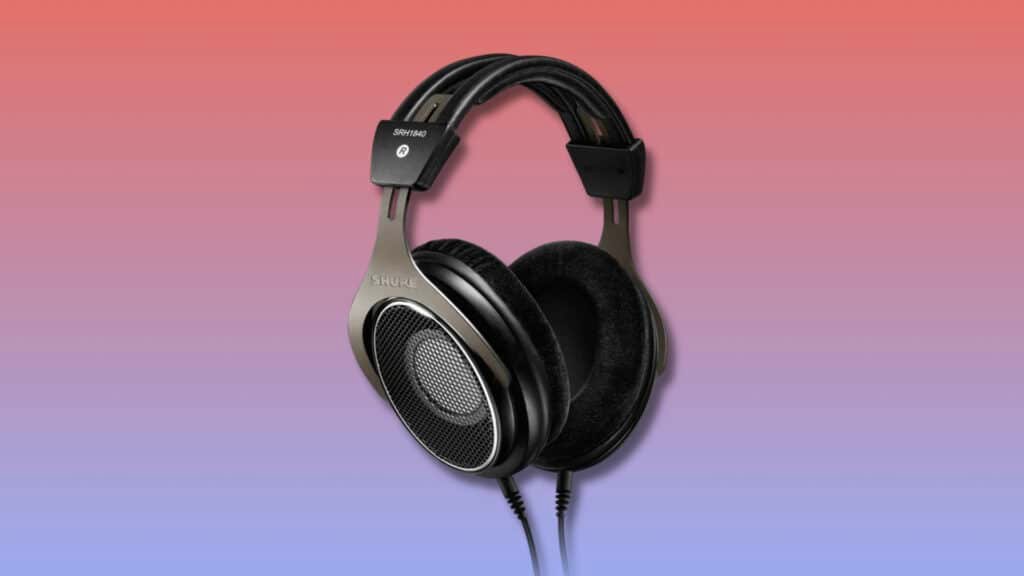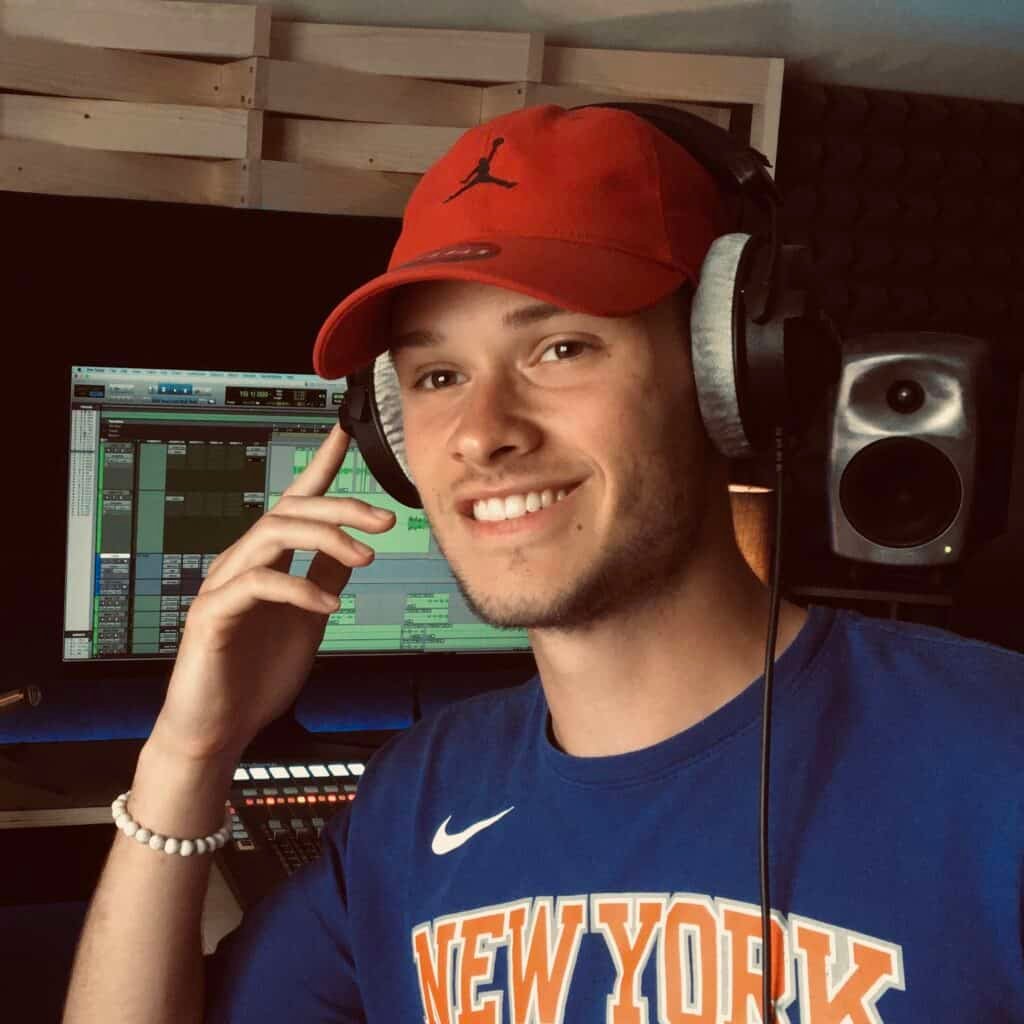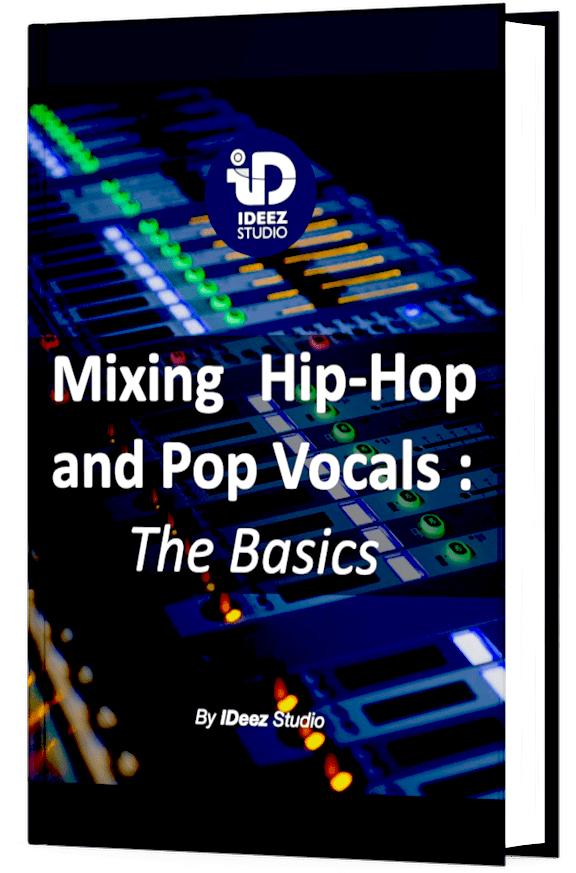If you work in the music production field and are still in the learning curve, you have probably heard of two types of studio headphones: closed-back and open-back. But what are the differences between the two? And which one should you go for? That depends very much on what you will be using them for. I’ll explain it all here.

The difference between closed-back and open-back headphones lies in the way the outer shell is designed. Closed-back headphones are constructed with a solid outer shell that completely covers the entire ear, isolating the ear from its environment. Open-back headphones, on the other hand, are designed with an open outer shell, usually in the form of perforations, allowing air to pass through.
ℹ️ Do you want to know all the aspects to take into account for choosing the right pair of headphones? This article is for you: Studio Headphones: 8 Things To Consider Before Buying
But how will each design affect sound, comfort and isolation? Which is best for you? And in which situation should you choose a closed-back or an open-back? I’ll give you all the information you need in the rest of this article.
Need a professional sound engineer specializing in pop and hip-hop mixing ? Great! Take a look at our services and let’s blow up your career together!
Let’s start now!
Misconceptions About studio headphones
Before getting into the heart of the matter, I thought it was very important to break down the preconceived notions about studio headphones. Because, in the amateur music production community, there are many misconceptions that are spread throughout the community that absolutely must be dispelled!
1. Studio headphones are always well isolated
Many people think that studio headphones mean great isolation. It is not true. Well… not always! Isolation can be very good or it can be not the priority of the manufacturer.
Many of today’s great studio headphones don’t have good isolation. This does not prevent them from being sold by the thousands all over the world. Isolation is also a criterion that is increasingly emphasized in consumer headphones, but not necessarily in pro headphones.
The Beyerdynamic DT-770, for example, does not have incredible isolation and yet has been one of the most successful studio headphones for many years.
2. The frequency response of studio headphones is as flat as possible
No, the frequency response curve of studio headphones is not necessarily flat. If it were, mixing or producing music with headphones would be the most boring thing in the world.
All professional studio headphones have a certain curve that will either emphasize or not emphasize certain frequency areas. This is exactly why there are so many pro headphones on the audio market today.
But let’s stay on the same page: studio headphones are clearly more neutral than consumer headphones. But neutrality doesn’t always have to be the primary criterion.

Main differences between closed-back and open-back
1. Design
As already stated in the definition at the beginning of the article, the main difference is in the design. And it is this difference that influences all the others.
As a rule, open-back headphones are not 100% open, rather the opening is constructed in the form of a grid. The design of this open outer shell has very little effect on the sound, as long as air is able to escape from the frame.
Here’s an example of an open-back headphone:

For closed-back headphones, a closed plastic frame is usually used as the outer shell. This means that air cannot pass through this part of the headphones.
Here is an example of a closed-back headphone:

2. Isolation
As you can see, in terms of environmental isolation, one of them is much better than the other. In fact, it is quite logical that closed-back headphones are more efficient than open-back ones in terms of isolation, since the back is closed.
Keep in mind, however, that isolation is not the priority of all manufacturers. Even with closed-back headphones, you can sometimes get poor isolation. Generally, leather earpads isolate external noise much better than other materials.
With open-back headphones on your ears, on the other hand, you can expect very little isolation from outside noise, if any at all. Hearing everything going on around you can sometimes be very limiting.
But it can be an advantage in some situations. If you want to mix with headphones in front of a client, for example, you can still hear their feedback live, without having to remove your headphones.

3. External noise
Now let’s look at it the other way around, what type of headphones cause the most noise outside? I guess you know the answer: open-back headphones. Because the outer shell is open, the sound from the speakers can escape very easily.
So you might ask yourself this question: how loud is the outside noise caused by open-back headphones? This obviously depends on your listening level. But at a relatively normal level, yes, the noise generated outside will be quite loud.
In fact, what you need to understand is that a speaker (whether in headphones or in a monitor), when it is on, emits sound from both sides, front and back.
By using open-back headphones, sound signal will therefore escape directly from the headphones’ speakers, without even being reflected by your head.
If you work with people in the same room as you in certain situations, I wouldn’t recommend using these headphones.
4. Sound
Besides all these practical and aesthetic aspects, what is also very interesting is to have a sound rendering adapted to your needs. And here again, there is a noticeable difference between closed-back headphones and open-back ones.
As a general rule, open-back headphones produce a more open, accurate and immersive sound. This makes sense because of the external openings. On the other hand, closed-back headphones can produce reflections within the frame itself and therefore lack precision.
But this is only theoretical, the reality can sometimes deviate from this theory and some closed-back headphones sound much better than open-back ones. It also depends a lot on your tastes and preferences.
The best thing is to test both types of headphones (preferably from the same brand) and make up your mind from there.

Which one is better?
Neither type of headphones is better than the other, your choice will depend mostly on your tastes/preferences and the context in which you want to use them. I’ll tell you more below!
Mixing /Mastering: Go for open-back
In the mixing and mastering stage, you are usually alone in your room to work on your project. So it’s not a big deal if you have sound coming out of headphone speakers.
Moreover, mixing and mastering are production phases that require concentration and attention to detail. In this respect, the precision of open-back headphones will be much more suitable.
Of course, nothing prevents you from using both and switching from one to the other. The more different types of monitoring you use, the more lucid your mix choices will be.
Recording: Go for closed-back
For recording purposes, closed-back headphones should be preferred (if not required) for two reasons:
- The first is a question of comfort. When you’re recording, whether you’re the recording engineer or the artist, you most likely prefer to concentrate on what’s coming through the headphones, not on anything else. Since closed-back headphones have a closed outer shell, you can always stay in your own bubble.
- The second is a more technical aspect. When you record a source, be it vocals or something else, you want to record only that source. This is where closed-back headphones come in handy, as they will avoid bleeding into the mics and therefore also feedback problems.
This helps explain why closed-back headphones are so much more popular than open-back ones: they can be used in all situations.
This is not the case with open-back, which can quickly become a problem when recording, or even if there are other people in the room with you.
Our favorite closed-back headphones
Beyerdynamic DT-770

The DT-770 headphones have been the best-selling professional headphones for decades. And they have every reason to be: comfort, robustness, pleasant sound,… All the ingredients of a good headphone are there!
Whether you are an amateur or a professional in the field of production, mixing, mastering or recording, don’t hesitate a second, these headphones will suit you!
At IDeez Studio, we have several DT-770’s available and artists are always impressed with all the qualities that these headphones have.
ℹ️ If you want to learn more about the DT-770 headphones, you can read this article about Why The DT-770 Headphones Are Still The Best In 2022
Our favorite open-back headphones
Shure SRH1840

The sound quality of these open-back headphones is just… impressive! These are the kind of headphones that really make you love open-back.
If you’re going to spend long hours and days working with headphones and still have good sound quality in your ears, I really recommend you go for these headphones.
Besides the quality, it’s also in terms of comfort that it scores points. You can spend hours in a row with the SRH1840, your ears and head won’t even feel it!
Need a professional sound engineer specializing in pop and hip-hop mixing ? Great! Take a look at our services and let’s blow up your career together!
Let’s start now!
Closed-back vs Open-back: Conclusion
The big difference between closed-back and open-back headphones is the way each is designed. Closed-back headphones have a closed outer shell, while open-back headphones have an open outer shell, allowing air and sound waves to pass through. It is this main difference that influences the other differences: isolation and sound.
Your choice will depend on your future use. But closed-back headphones have a big advantage over open-back headphones: they can be used everywhere and in every situation!
Therefore, if you are still an amateur in the music business, I advise you to choose closed-back headphones first, regardless of the application. That way you can be sure to use it 100% of the time and have no regrets about your purchase.
If you have any questions about this topic or anything else related to music production in general, please contact me, I’m always happy to help!
Related Articles:
My favorite tools for mixing pop and hip-hop music:
Plugins
In the field of auto-tune, I’m convinced that nothing’s better and more efficient than Antares Auto-Tune Pro. As for the EQ’s, FabFilter Pro-Q3 and Slate Digital Infinity EQ are, in my opinion, the best tools. For compression, I have 2 favorites plugins: Waves RComp and UAD EL8 Distressor.
As for reverb, I’m a big fan of the Soundtoys Little Plate, but generally, I go for the Valhalla VintageVerb for its versatility. I also love the Arturia Rev PLATE-140 and the UAD Pure Plate for its organic side.
Headphones
The closed headphones I love and will always love using for mixing pop and hip-hop music are the Beyerdynamic DT-770. As for the best open-back headphones, I use the Sennheiser HD600 headphones, and I’m really happy of them!
Monitors
Having a pair of Yamaha HS7 in its studio or home studio is always cool for more excitement while listening to your mixes. The Adam Audio T7V monitors are also super accurate. In my studio, I also have a pair of Genelec 8030 for their reliability.
Hardware gear
For anyone who wants to start using hardware in their mixes, I always recommend these 2 units from Klark Teknik: the EQP-KT and the 76-KT. Don’t forget to use good converters, such as the Apollo interfaces. This is essential for a good rendering.






